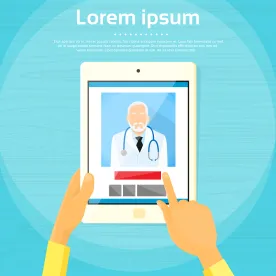In a rare bipartisan and bicameral compromise, Congress has passed the “Substance Use–Disorder Prevention that Promotes Opioid Recovery and Treatment for Patients and Communities Act,” shortened to the “SUPPORT Act.” The bill was signed by President Trump on October 24, 2018. With the broad aim of improving access to addiction treatment and addressing the opioid epidemic, the Act attempts to tackle the epidemic from multiple angles, including via telehealth and telemedicine. The Act expands access to treatment by eliminating geographic restrictions on reimbursement and directing the attorney general to promulgate rules regarding a special telehealth registration.
As the law was previously written, Medicare would only pay for services delivered via telemedicine if the patient was located at an originating site that is rural.[1] Section 2001 of the Act eliminates these geographic restrictions if the “telehealth services [are] furnished on or after July 1, 2019, to an eligible telehealth individual with a substance use disorder diagnosis for purposes of treatment of such disorder or co-occurring mental health disorder.” With regard to Medicaid, Section 1009 of the Act gives the secretary of the Department of Health and Human Services one year to issue guidance to states on “options for Federal reimbursement of expenditures under Medicaid for furnishing services and treatment for substance use disorders, including assessment, medication-assisted treatment, counseling, medication management, and medication adherence with prescribed medication regimes, using services delivered via telehealth.”
Section 3232 of the SUPPORT Act gives the attorney general one year to promulgate final regulations that create a special registration for telemedicine. Currently, the Ryan Haight Online Pharmacy Consumer Protection Act of 2008 (“Haight Act”) prevents any provider from prescribing a controlled substance via telemedicine unless one in-person exam has already been conducted.[2] This has largely deterred the treatment of opioid use disorders via telemedicine since MAT uses controlled substances such as buprenorphine for treatment. The Haight Act has always contained an exception from the in-person examination requirement for those providers and entities that obtain a “special registration” from the U.S. attorney general or the DEA administrator,[3] but no regulations have ever been promulgated regarding this registration and, therefore, no provider has been able to obtain one.
This legislation coincides with the administration’s other initiatives to promote telemedicine as an effective treatment modality for substance use disorders. On September 18, 2018, the Department for Health and Human Services posted a blog entry entitled “Using Telemedicine to Combat the Opioid Epidemic,” which is intended to clarify how practitioners are permitted to use telemedicine to provide MAT. Recognizing that rural areas have been hit particularly hard by this epidemic and that this geographic isolation makes providing treatment even harder, the post links to materials developed by DHHS, including a clinical practice example, so practitioners can more comprehensively understand the laws and regulations.
[1] 42 USCS § 1395m(m)(4)(c)(i). The patient must either be located in an area that is a designed rural health professional shortage area or in a county that is not included in a Metropolitan Statistical Area. Id.
[2] 21 U.S.C. § 829(e)(2)(A)(ii).
[3] 21 U.S.C.§ 802(54)(E); 21 U.S.C. § 831(h); 21 C.F.R. § 1300.04(i)(5).



 />i
/>i
